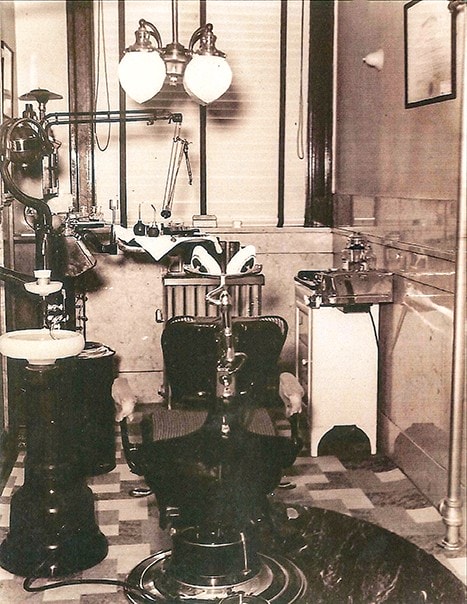Dr. Nicholas M. Pecuch was a dentist almost a century ago in Old Forge, a small town in northeastern Pennsylvania famous since his time for its signature thick, chewy pizza. Dr. Pecuch’s sister gave me the 1934 photograph you see here, which is a remarkable depiction of a typical Depression-era dental operatory.
The entire office consisted of two rooms: a waiting area and an operatory. In small towns. these offices were generally second-floor walkups above a retail store or similar operation. Rents were (and are) cheaper up there, and dentistry, thank goodness, has never been a profession dependent on spontaneously beckoning customers from the street. In cities. you’d find these practices inside large office buildings, reached by elevator.
You can likely identify many of the items you see here. but let me call your attention to a few of the less obvious. The out-of-use gas outlet. on the right-hand wall. was common before electricity became standard, as was the Bunsen burner to the left of the bracket table – proof that they had a professional use long before your junior-high science class.
The chair was a pump model, the ubiquitous ceiling cluster light would look right at home in an old-fashioned steakhouse and the X-ray machine … well, as you might observe if you look closely, there wasn’t one. Perhaps the most important detail, though, can be found toward the bottom of the photo, lying atop the checkered linoleum flooring: the padded rubber mat. Back then, a dentist’s main jobs concerned extractions and removable appliances (the typical supply order was less than $30 a month). The dentist would stand there for hours on end, and these pads were designed to relieve some of his burden. (It was always a man.) When we hear people hark back to “the good old days” then, dentists at least should remember something: They weren’t all that good.


